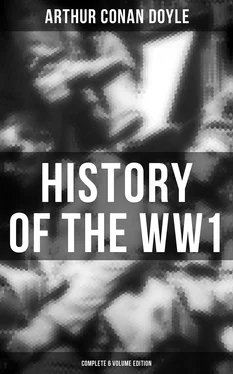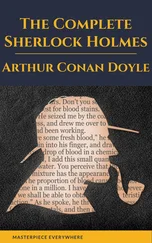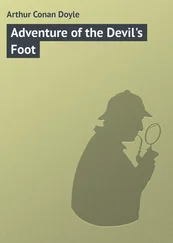The German heavy guns upon the 21st set fire to the village of Missy, but failed to dislodge the 1st East Surreys who held it. This battalion, in common with the rest of Ferguson’s Division, were dominated night and day by a plunging fire from above. It is worth recording that in spite of the strain, the hardship, and the wet trenches, the percentage of serious sickness among the troops was lower than the normal rate of a garrison town. A few cases of enteric appeared about this time, of which six were in one company of the Coldstream Guards. It is instructive to note that in each case the man belonged to the uninoculated minority.
A plague of spies infested the British and French lines at this period, and their elaborate telephone installations, leading from haystacks or from cellars, showed the foresight of the enemy. Some of these were German officers, who bravely took their Lives in their hands from the patriotic motive of helping their country. Others, alas, were residents who had sold their souls for German gold. One such—a farmer—was found with a telephone within his house and no less a sum than a thousand pounds in specie. Many a battery concealed in a hollow, and many a convoy in a hidden road, were amazed by the accuracy of a fire which was really directed, not from the distant guns, but from some wayside hiding place. Fifteen of these men were shot and the trouble abated.
The attacks upon the British trenches, which had died down for several days, were renewed with considerable vigour upon September 26. The first, directed against the 1st Queen’s, was carried out by a force of about 1000 men, who advanced in close order, and, coming under machine-gun fire, were rapidly broken up. The second was made by a German battalion debouching from the woods in front of the 1st South Wales Borderers. This attack penetrated the line at one point, the left company of the regiment suffering severely, with all its officers down. The reserve company, with the help of the 2nd Welsh Regiment, retook the trenches after a hot fight, which ended by the wood being cleared. The Germans lost heavily in this struggle, 80 of them being picked up on the very edge of the trench. The Borderers also had numerous casualties, which totalled up to 7 officers and 182 men, half of whom were actually killed.
The Army was now in a very strong position, for the trenches were so well constructed that unless a shell by some miracle went right in, no harm would result. The weather had become fine once more, and the flying service relieved the anxieties of the commanders as to a massed attack. The heavy artillery of the Allies was also improving from day to day, especially the heavy British howitzers, aided by aeroplane observers with a wireless installation. On the other hand, the guns were frequently hit by the enemy’s fire. The 22nd R.F.A. lost a gun, the 50th three guns, and other batteries had similar losses. Concealment had not yet been reduced to a science.
At this period the enemy seems to have realised that his attacks, whether against the British line or against the French armies which flanked it, and had fought throughout with equal tenacity, were a mere waste of life. The assaults died away or became mere demonstrations. Early in October the total losses of the Army upon the Aisne had been 561 officers and 12,980 men, a proportion which speaks well for the coolness and accuracy of the enemy’s sharp-shooters, while it exhibits our own forgetfulness of the lessons of the African War, where we learned that the officer should be clad and armed so like the men as to be indistinguishable even at short ranges. Of this large total the Second Corps lost 136 officers and 3095 men, and the First Corps 348 officers and 6073 men, the remaining 77 officers and 3812 men being from the Third Corps and the cavalry.
It was at this period that a great change came over both the object and the locality of the operations. This change depended upon two events which had occurred far to the north, and reacted upon the great armies locked in the long grapple of the Aisne. The first of these controlling circumstances was that, by the movement of the old troops and the addition of new ones, each army had sought to turn the flank of the other in the north, until the whole centre of gravity of the war was transferred to that region. A new French army under General Castelnau, whose fine defence of Nancy had put him in the front of French leaders, had appeared on the extreme left wing of the Allies, only to be countered by fresh bodies of Germans, until the ever-extending line lengthened out to the manufacturing districts of Lens and Lille, where amid pit-shafts and slag-heaps the cavalry of the French and the Germans tried desperately to get round each other’s flank. The other factor was the fall of Antwerp, which had released very large bodies of Germans, who were flooding over Western Belgium, and, with the help of great new levies from Germany, carrying the war to the sand-dunes of the coast. The operations which brought about this great change open up a new chapter in the history of the war. The actual events which culminated in the fall of Antwerp may be very briefly handled, since, important as they were, they were not primarily part of the British task, and hence hardly come within the scope of this narrative.
The Belgians, after the evacuation of Brussels in August, had withdrawn their army into the widespread fortress of Antwerp, from which they made frequent sallies upon the Germans who were garrisoning their country. Great activity was shown and several small successes were gained, which had the useful effect of detaining two corps which might have been employed upon the Aisne. Eventually, towards the end of September, the Germans turned their attention seriously to the reduction of the city, with a well founded confidence that no modern forts could resist the impact of their enormous artillery. They drove the garrison within the lines, and early in October opened a bombardment upon the outer forts with such results that it was evidently only a matter of days before they would fall and the fine old city be faced with the alternative of surrender or destruction. The Spanish fury of Parma’s pikemen would be a small thing compared to the furor Teutonicus working its evil deliberate will upon town-hall or cathedral, with the aid of fire-disc, petrol-spray, or other products of culture. The main problem before the Allies, if the town could not be saved, was to ensure that the Belgian army should be extricated and that nothing of military value which could be destroyed should be left to the invaders. No troops were available for a rescue, for the French and British old formations were already engaged, while the new ones were not yet ready for action. In these circumstances, a resolution was come to by the British leaders which was bold to the verge of rashness and so chivalrous as to be almost quixotic. It was determined to send out at the shortest notice a naval division, one brigade of which consisted of marines, troops who are second to none in the country’s service, while the other two brigades were young amateur sailor volunteers, most of whom had only chapter been under arms for a few weeks. It was an extraordinary experiment, as testing how far the average sport-loving, healthy-minded young Briton needs only his equipment to turn him into a soldier who, in spite of all rawness and inefficiency, can still affect the course of a campaign. This strange force, one-third veterans and two-thirds practically civilians, was hurried across to do what it could for the failing town, and to demonstrate to Belgium how real was the sympathy which prompted us to send all that we had. A reinforcement of a very different quality was dispatched a few days later in the shape of the Seventh Division of the Regular Army, with the Third Division of Cavalry. These fine troops were too late, however, to save the city, and soon found themselves in a position where it needed all their hardihood to save themselves.
Читать дальше












